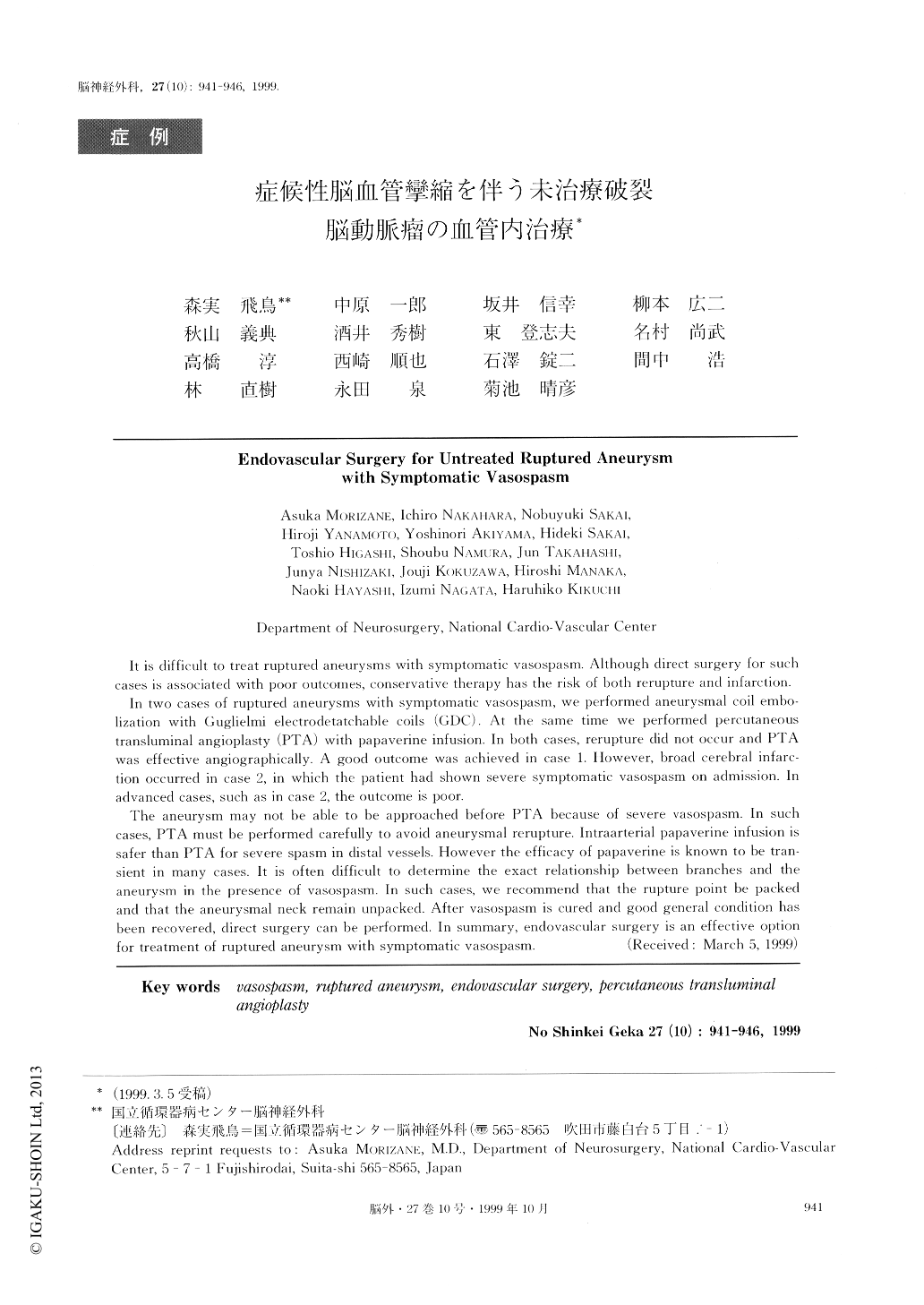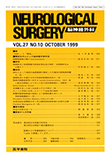Japanese
English
- 有料閲覧
- Abstract 文献概要
- 1ページ目 Look Inside
I.はじめに
くも膜下出血後の脳血管攣縮には,3H療法,Ca拮抗剤の投与,塩酸パパベリンの動注,血管形成術などの治療が行われる.しかし,これらは破裂脳動脈瘤が未治療の場合,再破裂の危険性を高めるものであり,対応に苦慮することが多い.
われわれは,そのような2症例において,急性期に血管内治療を行ったので考察を加えて報告する.
It is difficult to treat ruptured aneurysms with symptomatic vasospasm. Although direct surgery for suchcases is associated with poor outcomes, conservative therapy has the risk of both rerupture and infarction.
In two cases of ruptured aneurysms with symptomatic vasospasm, we performed aneurysmal coil embo-lization with Guglielmi electrodetatchable coils (GDC). At the same time we performed percutaneoustransluminal angioplasty (PTA) with papaverine infusion. In both cases, rerupture did not occur and PTAwas effective angiographically. A good outcome was achieved in case 1. However, broad cerebral infarc-tion occurred in case 2, in which the patient had shown severe symptomatic vasospasm on admission. Inadvanced cases, such as in case 2, the outcome is poor.
The aneurysm may not be able to be approached before PTA because of severe vasospasm. In suchcases, PTA must be performed carefully to avoid aneurysmal rerupture. Intraarterial papavrine infusion issafer than PTA for severe spasm in distal vessels. However the efficacy of papaverine is known to be tran-sient in many cases. It is often difficult to determine the exact relationship between branches and theaneurysm in the presence of vasospasm. In such cases, we recommend that the rupture point be packedand that the aneurysmal neck remain unpacked. After vasospasm is cured and good general condition hasbeen recovered, direct surgery can be performed. In summary, endovascular surgery is an effective optionfor treatment of ruptured aneurysm with symptomatic vasospasm.

Copyright © 1999, Igaku-Shoin Ltd. All rights reserved.


